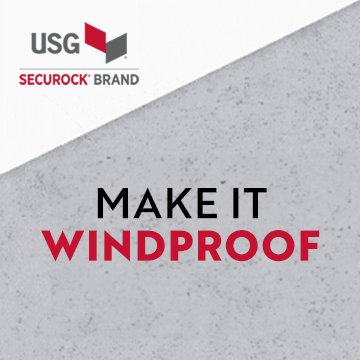Why standing seam (traditional) is the best roofing ever
« Back To Roofers TalkVideo showing all seam details: https://youtu.be/ImtSdwAk8Po
Why standing seam is the best roofing ever:
There is nothing to hide.
The base pan is in view: and all penetrations are picked up, at all four corners and seamed through twice over.
All pans are independent and repairable.
Any defects in the seam can be inspected with a single 180 degree turn.
Real seamers don't hide behind laps, caps, goop, and solder.

 :blush:
:blush:
Earlier in the thread I quoted Natty as saying "I'm on the only roofer who know's how good I really am" I'm sorry, but I think it was seen-it-all. Apologies to both of you, I know your both in the Plains and I like both your attitudes.
Kurt: The conference sounds interesting, but I'm sure I'd feel like a newb! That's okay though, I swallow my pride to learn. If this summer goes well I'd consider coming to Penn, I've wanted to anyways.
Your teaching a class all day? Is there a cost? I didn't see any info on SRCA's website.
on the value question:
I'm all for cheap roofing. I will install 3 tabs, rubber,
even hydro-stop coatings on the right circumstance.
I am usually first to recommend painting and maintenance before replacement.
Old worn copper can be coated, same with tin.
If it's beyond the point of coating or the client is ready to start from scratch: I don't see any value in soldered (copper work) for the reasons I stated before. I charge less for proper work than most outfits charge to say they are doing historical work, when really they are just slapping copper together with solder.
Let's say a client is paying $100 per linear foot of cornice work (typical midwest, 3 story victorian, with "copper" built-ins). This job would cost them the same, my approach (in line with the rest of the world) or the standard 10' sheets lapped, rivet, solder. So if the project budget is not affected by the change, and only the education and experience of the installer must be up to par. It doesn't cost any more, and it actually is a lot more teachable than soldering if you have your fundamentals down.
There is no long-term value in improperly done metalwork, it just becomes a monolith once you solder together. Once you solder together you have really just created one piece... a nice backing for hydropstop or coating in 20-30 years when there is damage, or a seam finally gives way. Or you could always try to grind brite, clean, sweat in patches, and we've all tried that and know how problematic it is...
The true value is in charging the same as the rest of the market, but giving the customer something that is truly permanent, even in the event of a repair.
Yeah Clvr:
I've done two traditional american "tin" roofs with modern steel, and have one coming up this summer.
The only big difference with steel vs copper is, you have to anneal more if you are going to open up a pleat you've already put in the material.
On those inside corners there is almost always a pleat or "dog ear"
Some american tinners might be familiar with this from doing the pan-ends of batten cap roofs, or putting in "bread pan" folds instead of locking strips on their capped standing seam roofs.
We are using the same approach: just carrying that "upstand" all the way through to the next seam.
You can do it with almost any metal that will "seam". Aluminum is a no-go.
I'm using 20" and 24" rezibond coils and having great results.
There are very few books out on the process, and details, and folding sequences, which is really vital to put it all together on the roof...
I spend a lot of time modeling in paper, on the seam ends and terminations.
There is a german textbook I got from a copper craft company in Canada: Steetz is the name if you google them, they are very helpful and will order just about anything we don't have access to here in the states.
The text is in german, but it has full-scale patterns you can trace out of the book and use to study.
I will have guides and full-scale patterns and videos on my website very soon: right now all that material is scattered between Facebook, my portfolio site, and old website.
Also doing a training session at the SRCA conference in PENN this fall.
If you can make it out to that, you could get quite a primer in a day.
Nuerbakers books are the best place to start
Kurtis: You install steel with the same details as copper? I'm imagining that would be a bit harder to learn on. This past winter I realized that I would rather spend my spare time working with metal than wood. Do you have recommended reading(downloadable book?) for me to ignore...*cough* attempt to read during this next winter.
I'm pretty sure I DON'T have the patience for much of this work, but I do find it interesting.
Woody: Natty said on here not too long ago "I'm the only person who realizes just how good of a roofer I am" --- This was regarding his comp installs in "hail country." I completely believe him too. It is about getting the most out of the material your working with. This copper work is amazing, and something to be respected for sure. But there is nothing wrong with giving your customer base what they demand at a good "value"
Another thing: I don't even think copper is the end-all be all for permanent roofing. I push painted steel as the best value, copper as purely aesthetic upgrade to steel. The labor is the same to render them Properly.
Egg: everyone is on the FB roofing community now
Also I have never been one to hoard knowledge to get an edge, I've even helped competitors on this stuff because I care about the material and the building more than a paycheck.
I'm not here to down anyone: I'm not calling them Neanderthals like the slate bible. I have too much respect for the workers to do that. Most of the work commissioned on historic roofing is coming from the top down not by the workers themselves so it's wrong to attack them for doing their job.
I do want the standards to Change though. We are doing demos At the srca and eventually other conferences to spread this knowledge so someday every historic roof out in will have a proper upstand, or be laughed out of the community... Joes book Was harsh on the trade but it did make a point. Quit messing up slate Roofs! I can't help but feel the same way about standing seam. It is my culture and heritage
John, I gave myself an education before I ever touched copperwork. Maybe that is the edge that sets me apart from most; I took a year studying the history of metalwork, pattern drafting, made models of obtuse gutter miters, made finials in my shop, and poured over volumes of books I accessed while I still had access to the architectural resource library at school. I new that there was a right and wrong way to do standing seam from an old book I downloaded in 2005: right around the same time I started apprenticing for a guy who was known for doing (old school) standing seam.
That book Was in a foreign language and it didn't have the full scale patterns like the new German textbooks do: but it had illustrations of the folding sequences. I saw what the guy I was apprenticing for was doing to the copper, and I recognized it as uninformed, guesswork, built Off someone else's uninformed guesswork. I have never done that in my career. I look for precedents and study before Doing anything.
So You can say "I'm sure You guys did work like that before" but you would be wrong. I came into this game stronger than most just based on education. Experience Is for nothing: if you have 20 years doing busted uninformed work that's not 20 years of experience its 20 years if guessing and head scratching.
This is for those Out there who are Told to do garbage work Or Are learning from someone who is in no position to teach: hit the books! The information is out there, and we are gonna make it more pervasive too so young metal men will know the difference between real work: and stuff just faking the look from the ground
Branden and Kurtis I admire your efforts. Don't be offended by the pedantic. I believe it's well intentioned . Your desire to raise the bar is to be applauded. B) :) :) B) Deep Down In Florida Where The Sun Shines Damn Near Every Day
This is a little mind-warping for me.
A few years ago this roofers' site was just booming with almost ridiculous energy from people all across the board. We had a thousand posts on a thread about a hypothetical airplane taking off from a treadmill. We had people sharing un-roofing related information about everything from video games to spicy food. We had hot men, slaters, tilers, "production" people, people doing roofing on the side, copper men, wood men, pitch men, you name it. We had them all here and they were all telling us their innermost secrets. We had Tom Hay turning the world upside down or right-side up with his insights on foam and polyurea. We even had the inimitable Mike Hicks (before he took a close look at those two products) making a literary joke to the inimitable Tom Hay about polyurea being a fancy name that translated to "blended horse-piss."
It was good. And it's still good. bdub and Pattern X bring good energy; I'm happy with it. It illustrates William Blake's theory about poetic genius. Where one person leaves off, another has already begun. We are linked together in a universal sum, an interlocking network of consciousness. Nobody gets to claim credit for knowing it all, conceiving of it all, or owning it all. Too bad for Monsanto, which hasn't accepted this line of reasoning yet.
Back then, if you went to the NRCA chatroom, you got the most deadly boring posters you could ever hope to find. Nothing going, no offense to the NRCA which has helped the industry keep within sight of changes imposed by a litigious culture.
But back up a second.
Doing a Google search on copper stuff, you find the general consensus is that a good, properly-installed copper roof is going to last seventy-five years.
Oldschool and I (and he is a bit younger than I although who is counting) are not far off from that seventy-five years, and we both share at least one thing in common, a love for the trade, and another, a belief that quality has a legitimate right to stand up against "economics." So ask him or ask me. Is seventy-five years permanent? Keep in mind: Oldschool and I were young children about a blink of an eye ago. We love it and we're not complaining, but be really careful when you through a word around like "permanent."
I've gotten my tit in a wringer here over copper. I dared to say that if copper costs 30 cents for a step shingle (material only) and gsm costs 10 cts. for a step shingle (material only) and you can get gsm step shingles day in and day out for 50cts., it is highway robbery to charge $4.00 for a copper one. They even bend easier. What's the deal?
Don't get me wrong. I love integrity. I love craftsmanship. I love people who put righteousness before profit. But what, exactly, is "real," and what, exactly, is "permanent?" I do know what respect is, and I accord it in advance.
https://www.youtube.com/watch?v=abMsu4BdjB8
This guy is a nut, but he is a beautiful nut.
So here's my deal: if you can't spend the forty minutes to get to the bottom of his little video, then nothing is permanent. Commodity is everywhere. Heart and soul is always hiding where you least expect it.
Someday, we will have a group that actually juries to get on that list: unlike SRCA, NSA.
Someday awards in permanent roofing will be based on the actual craftsmanship that goes into the job rather than flashy photos.
For the sake of the good name of slate, tile, hardwood shingles, and standing seam: us who respect the tradition will not let fakers muck up the good name of these products.
For the sake of the buildings: structures important enough to warrant permanent roofing: historic structures, should be respected
For the sake of those who give their backs and lungs to harvest these materials
And lastly, for ourselves; if you are doing permanent roofing and not respecting the tradition: you know it in your heart. With every seam cap, piece of peel n stick, goop, and solution other than wits and raw material, you know it.
If you've ever torn out a 100 year old roof that was mint: no underlay, deck as solid as the day it was put on: you would understand.
Brandon and I have both been moved by the things we behold in old craftsmanship and set out on a path to revive it here in the states (and Caribbean).
The production roofing industry means nothing to me... It would be like taking a seed saver who had lived off the land their whole life to the garden section at home depot... they would just laugh at you.
The stuff i have learned, also is the basis for why we have the products we do now... There is an evolution for everything and we still use terms like headlap even on asphalt: that is a slating term. Everything in roofing came from something else: The big rib snap lock standing seam was inspired by the earlier examples, no doubt.
There are a lot of tin knockers, slaters, thatchers, shinglers, and steeplejacks that came before use. If I am called to re-create or restore their work: I want to be sure I'm doing it right and respect the tradition they worked in.
Clvr, youd be surprised how many people ARE interested in this type of work, even amongst the masses. Most of the time though the option is not even known to the consumer.
Existing only in the present one could easily say that cheap, temporary roofing will be the only way forever. But study history and realize that this is a trend and these trends come and go. One thing for sure is that this current temporary culture will eventually destroy itself. It has to. What will rise from the rubble is real, authentic, true, etc.
Its important not to go pushing the truth on people but equally important to be able to provide it when requested.
First off, man Kurtis!!! You are on fire!!!
John, i think he is actually very humble. Kurtis has found a historic renovation market that is on the rise. The first step to this kind of growth is being humble enough to face that there is a better way. Then it takes lots of education, work and sacrifice to make it happen.
Funny how we catch all the crap though. The entire roofing industry is not just in the dark and unaware but actually mounts a fight when they come across real roofing. I see it like this... Production roofing makes all the money. We all respect that. Infact i wish so bad i could make the money yall make. But theres still a place for proper roofing.
How are we a problem to yall? I have literally never seen a craftsman pushing lies on consumers on production homes, selling them away from production roofers. Yall get 99.9% of the market, probably more. But my biggest problem is production roofers infiltrating the fine home market with cheap temporary products that are dishonest.
I think its embarrassing that production roofers for the most part dont respect or even show interest in traditional permanent roofing. I think it exposes them. Business is about numbers and based on that, yall are by far in the lead. People like kurtis and myself dont look at this as a numbers game. We love roofing, its our life. Kurtis came down here and he was up all night reading, sketching and making patterns. Then he was up first thing getting prepared. All day long he was in the zone and just exuded this energy that he loved what he did. On the weekends he was experimenting and doing the same as above.
We dont have any industry support whatsoever. No products that advertise for us, none we can get "certified" with so we are the only choice, no multi million dollar advertising campaigns inserting preconceived notions in peoples heads, no bandwagons we can jump on, etc. We are on our own out here with everything stacked up against us.
We have chosen the narrow path in roofing and pride is what we are left with rather than profit. Not complaining, just pointing out that we deserve respect.
I made more money than i could count in production roofing. Ill never forget the day someone put a piece of slate in my hands. It changed my life forever. Unfortunately since then, i have nothing in common with roofers. I wish so bad we had some sort of fellowship. I come here to share. When i was yall i always had an interest in traditional roofing.
Kurtis is eager to teach his trade. So am i. He goes above and beyond giving his valuable time and hard earned wisdom to anyone curious. I will do the same.
I agree that there is a place for production roofing just as there is a place for traditional roofing. I am friends with local contractors. I pass them the production work and they pass me the ones they are not qualified for. Thats a big step and knowing the difference takes wisdom and humility. I believe we can coexist if the respect is there.
Here's the thing with that CLVR: seamed work can be just as fast as any other copperwork. Of course you have to have a crew that is highly educated and trained in the methods but once you have that: it is in fact faster than soldered work. There are preservation jobs every day specing permanent roofing with the budget to cover this kind of work. Problem is architects, property managers, and boards that make the decisions on these projects do not know where to go for standards. They usually rely on smnca or copper.org standards: which are incomplete and mostly useless when it comes to traditional standing seam.
The problem is growing roofers that are steeped in: geometry, pattern drafting, classical architecture training, and of course the time behind a hammer and anvil to get experience. They school for 7 years for journeyman everywhere else. I think it's laughable that the greatest country in the world can't keep up. We need trades education so bad in this country too. If every young person blindly goes to college only to end up working at kinkos because they were sold a bag of goods that a degree would get them somewhere.
The money, and the building stock in need of permanent roofing is out there: we just have to elevate the standards and the training























